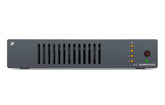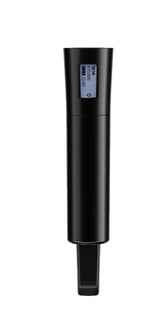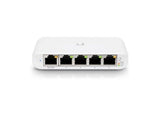5 Common Home Security Mistakes (And How to Avoid Them)
Introduction: Is Your Home as Secure as You Think?
Every 15 seconds, a home burglary occurs in the United States—and many of them are preventable. In fact, nearly 30% of break-ins happen through an unlocked door or window, and over half occur during daylight hours. It’s a harsh reality that underscores an important truth: even the most well-meaning homeowners often leave their property vulnerable.
In today's connected world, smart surveillance systems, motion sensors, and mobile alerts make it easier than ever to protect your home. But despite the availability of advanced home security technology, many people still make simple—but critical—mistakes.
In this blog post, we’ll break down the 5 most common home security mistakes and show you how to avoid them. From outdated equipment to overlooked entry points, we’ll help you shore up your defenses and protect what matters most.
What Are the Most Common Home Security Mistakes?
When it comes to home security, convenience often competes with consistency. Mistakes usually stem from a lack of planning, outdated tools, or false confidence in partial systems. While no setup is foolproof, understanding and correcting these common oversights can drastically reduce your vulnerability.
Let’s take a closer look at five frequent errors—and how to fix them.
Mistake #1: Relying Only on Basic Door Locks
A standard deadbolt on your front door may feel secure, but burglars know how to exploit weak points. Many homes still use inexpensive locks, outdated hardware, or lack reinforcement on door frames.
Why It’s a Problem:
-
Basic locks can be picked or bumped
-
Weak frames and strike plates can be kicked in
-
Glass panels near doors allow intruders to reach through
How to Avoid It:
-
Upgrade to smart locks with keyless entry, remote access, and audit trails
-
Install reinforced strike plates and door frames
-
Consider a video doorbell for added deterrence and real-time alerts
Use Case: A homeowner installs a Wi-Fi-enabled deadbolt and pairs it with a smart camera. Now they can verify visitors, lock the door remotely, and get alerts anytime someone approaches.
Mistake #2: Ignoring the Backyard, Garage, or Side Entrances
Most people focus on the front of the home, leaving side doors, detached garages, and basement windows vulnerable. Criminals know this—and often use these less-visible access points to gain entry.
Why It’s a Problem:
-
Garages often contain tools that can assist a break-in
-
Side doors are typically less reinforced
-
Ground-level windows are easy to access and rarely monitored
How to Avoid It:
-
Install motion-activated floodlights in dark areas around the property
-
Place outdoor cameras covering garages, driveways, and secondary doors
-
Use glass-break sensors or window contact alarms
Use Case: A family sets up weatherproof surveillance cameras with IR night vision and motion alerts along their fence line and garage. They're now alerted to movement before anyone gets too close.
Explore outdoor-rated security cameras built for 24/7 perimeter monitoring.
Mistake #3: Leaving Systems Unmonitored or Unmaintained
Installing a security system is only half the battle. Without ongoing monitoring, maintenance, or updates, your system can become ineffective—or even fail when you need it most.
Why It’s a Problem:
-
Systems may have outdated firmware, making them vulnerable
-
DIY setups might not notify you of breaches if improperly configured
-
Batteries in sensors or cameras may die without warning
How to Avoid It:
-
Choose smart home security systems with mobile app control and cloud storage
-
Set up real-time push notifications or SMS alerts
-
Regularly test sensors, replace batteries, and update firmware
Use Case: A homeowner sets reminders to test sensors monthly and subscribes to a mobile monitoring app with cloud video access. Now, even while on vacation, they get updates on all security events.
Mistake #4: Hiding Spare Keys in Predictable Places
Many people still hide a spare key under the mat, in a flowerpot, or on a windowsill. While it may feel convenient, burglars know all the usual spots—and can use them to walk right in.
Why It’s a Problem:
-
It defeats the purpose of locking your doors
-
If found, intruders can access your home undetected
-
Insurance claims may be denied if entry shows no signs of forced access
How to Avoid It:
-
Use a smart lock with app access or temporary codes for guests
-
If a key is absolutely necessary, install a lockbox in a concealed location
-
Avoid using fake rocks or key hiders near entrances
Use Case: A couple replaces their front-door key with a smart keypad lock. Temporary codes are created for house cleaners and dog walkers and expire after use.
Mistake #5: Forgetting About Network Security for Smart Devices
Smart cameras, doorbells, and alarm systems rely on Wi-Fi to function—but if your network is poorly secured, it can be an easy entry point for cybercriminals to disable or view your security footage.
Why It’s a Problem:
-
Default passwords and open ports can be exploited
-
Hackers may access your network through IoT devices
-
Outdated routers and firmware leave holes in your system
How to Avoid It:
-
Create a separate VLAN or guest network for smart home devices
-
Use strong, unique passwords and multi-factor authentication
-
Keep routers and connected devices updated with the latest security patches
Use Case: A homeowner installs a dual-band router and segments all IoT devices on a separate SSID. They update firmware monthly and monitor traffic through a mobile app.
Check out professional-grade networking solutions that support secure smart home ecosystems.
Best Practices for a Safer Home Security Strategy
While avoiding common mistakes is important, building a holistic, proactive security strategy offers even more protection.
Conduct a Home Security Audit
-
Walk through your home during the day and night
-
Identify blind spots, entry points, and visibility issues
-
Review landscaping that could hide intruders
Layer Your Security
-
Use cameras, sensors, lighting, and alarms together
-
Set automation rules (e.g., turn on lights when motion is detected)
-
Leverage mobile alerts and cloud backups
Secure More Than Just the Entry Points
-
Add interior sensors for safes, home offices, or medicine cabinets
-
Monitor detached buildings like sheds or garages
-
Secure second-story windows with locks or sensors
Keep Security Visible
-
Place yard signs or window decals if you have a monitored system
-
Install visible cameras to act as a deterrent
-
Use smart lighting to simulate occupancy when you're away
FAQs
Do I really need a camera system if I live in a safe neighborhood?
Yes. Even in low-crime areas, break-ins, porch theft, and vandalism can happen. A camera system provides evidence, deterrence, and peace of mind.
How many security cameras do I need for my home?
Most homes benefit from 4–8 cameras, covering:
-
Front and back doors
-
Driveway and garage
-
Common interior areas
-
Blind spots or secondary entrances
Is a DIY security system enough?
DIY systems can be effective if properly installed, maintained, and integrated. However, for large homes or complex setups, professional systems often offer better coverage, scalability, and support.
Conclusion: Small Fixes, Big Security Gains
Home security doesn’t have to be expensive or complicated—but it does require attention to detail. From locking the right doors to securing your Wi-Fi, avoiding common mistakes makes all the difference in keeping your home and family safe.
With the right tools, thoughtful planning, and regular maintenance, you can build a security system that adapts with your needs—providing confidence whether you’re at home or away.
Ready to level up your home security?
Shop our trusted selection of home surveillance cameras, AV solutions, and secure networking products at SportsGeekUSA—your partner in smarter, safer living.











